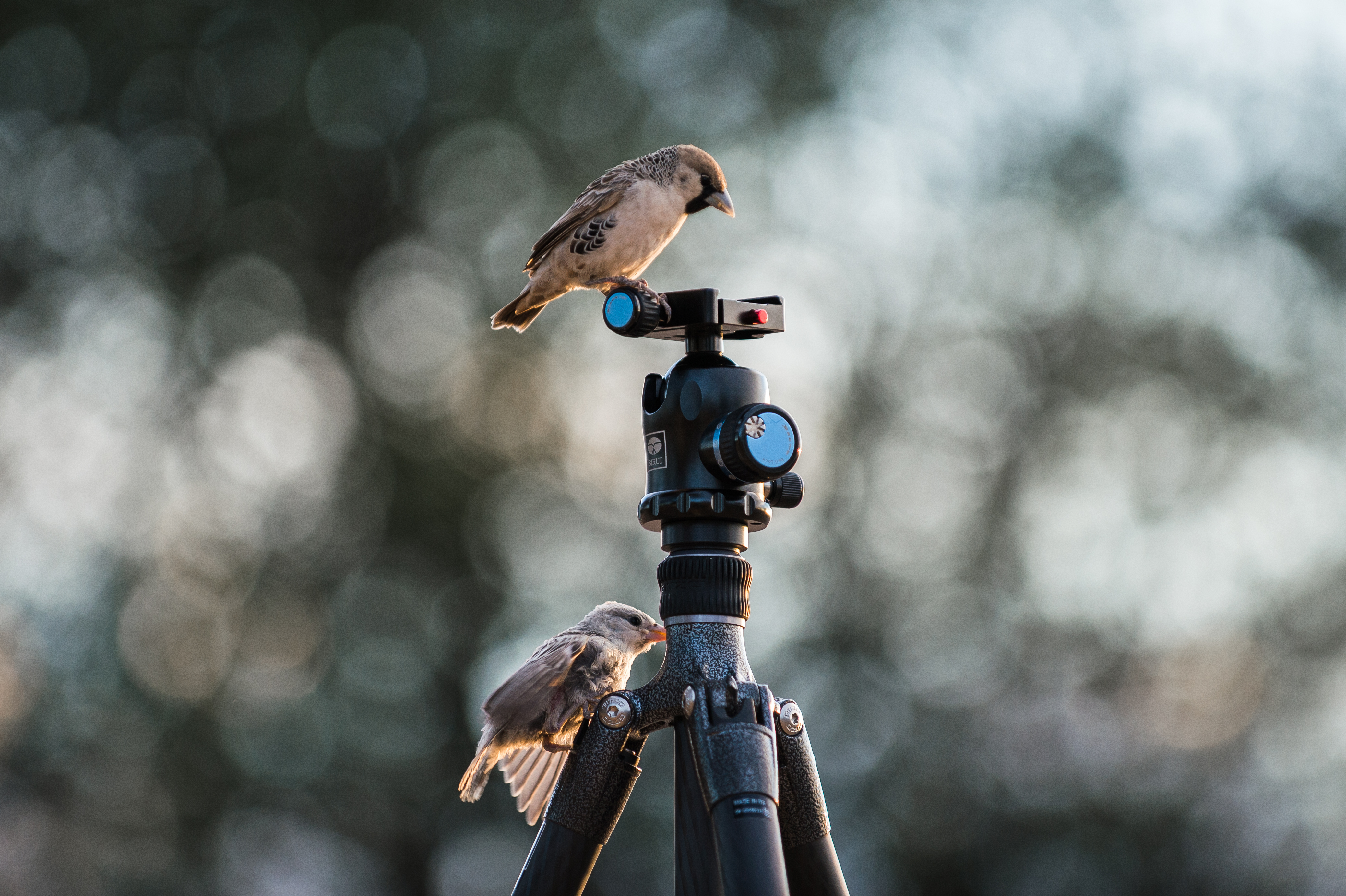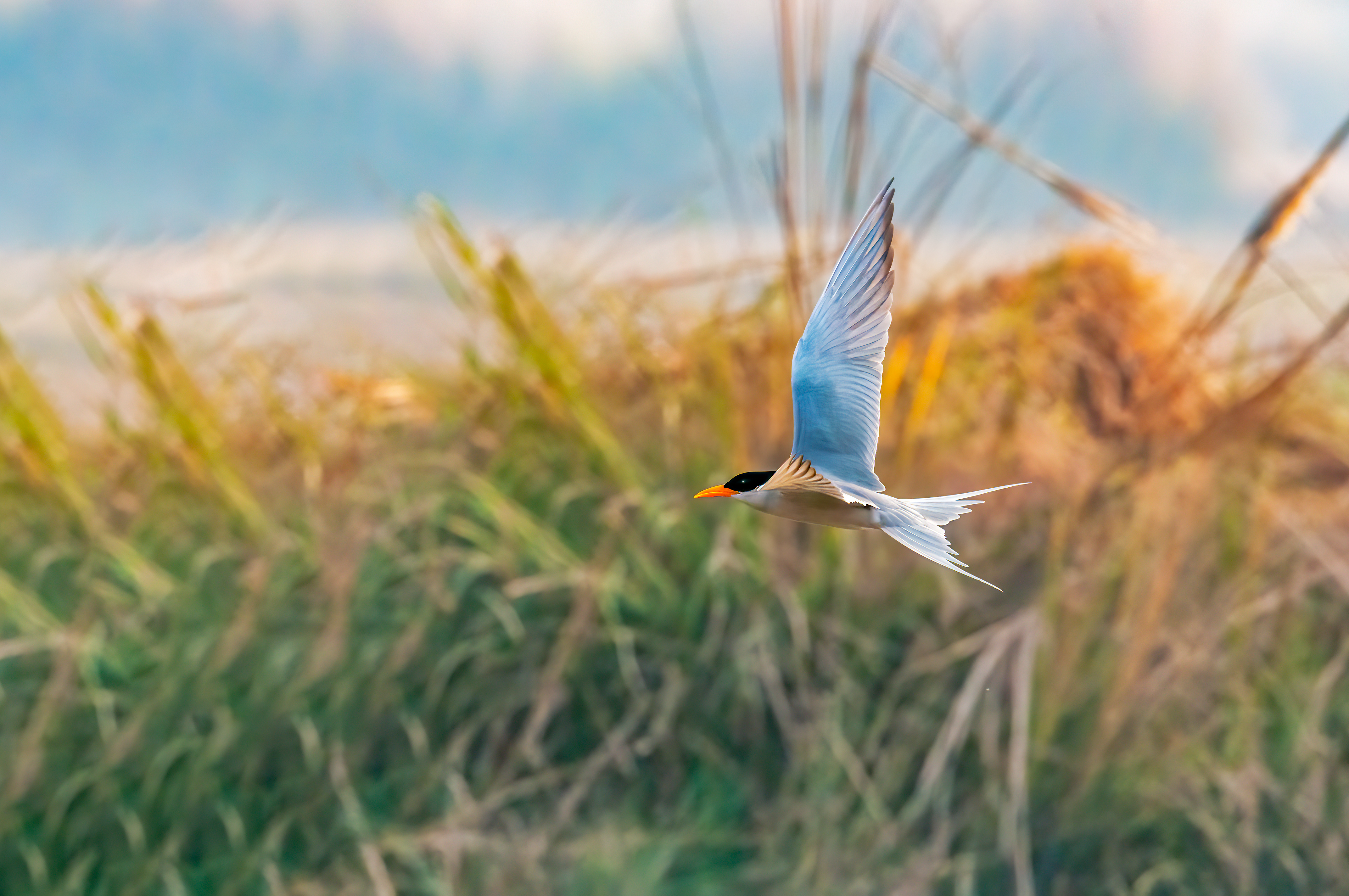
6 minute read
Bird Watching & Feeding in California
By CalBroker Magazine
“Whatever your birding goals; these California locations present rich opportunities to learn more about birds that live throughout the state.”
Bird watching is a popular activity for people who enjoy the outdoors and love seeing animals in their natural habitats. Whether you are a casual birdwatcher who enjoys attracting songbirds to your yard or a dedicated birder with an ambitious list of bird types you want to encounter, California offers plentiful areas to indulge in all things avian.
The NationalAudubon Society notes that over 660 species of birds have been recorded in California, including two species that are unique to the state: the yellow-billed magpie and the island scrub jay. The Golden State boasts diverse habitats, including mountains, seashores, deserts, and marshlands that are home to native birds and play host to migratory species as they pass through.
Whatever your birding goals, these California locations present rich opportunities to learn more about birds that live throughout the state.
Point Reyes National Seashore
The Point Reyes National Seashore is over 100 square miles of coastal habitat, located about an hour from San Francisco. Migratory birds stop over at Point Reyes, so birders can see different species throughout the year.
Visitors find that the coastal sections of the park are ideal for spotting shorebirds, including black-shouldered kites, Caspian terns, Pacific loons, Brandt’s cormorant, and black oystercatchers.
If you visit the inland areas of the park, you can spot birds that favor marshlands, forests, and meadows, including California quail, Nuttall’s woodpeckers, Pacific wrens, California towhees, varied thrush, and golden-crowned sparrows.
Salton Sea
The Sonny Bono Salton Sea National Wildlife Refuge is a unique birding area just north of the border with Mexico. It features a salty lake that was formed in 1905 when water from the Colorado River overwhelmed an agricultural canal system and filled a natural basin at the edge of the Sonoran Desert. The protected lands feature cattail marshes, shorelines, open water wetlands, grass fields, and desert uplands that act as sanctuary to over 400 species of birds.
In summer, the Salton Sea is the only place in the U.S. to see the yellow-footed gull. Winter birders can spot the snow goose and Ross’s goose, along with multiple species of ducks and the sandhill crane.
Arcata Marsh & Wildlife Sanctuary
The Arcata Marsh & Wildlife Sanctuary sits on the north end of Humboldt Bay. It’s situated along the Pacific Flyway, the migratory route used by thousands of birds that spend the summer breeding season in the far north, then travel to California, Mexico and Central and South America for the winter. The marsh hosts 300 species throughout the year, and it’s become a popular birding destination, with weekly organized bird walks year-round.
Visitors may spot rarely seen species like bar-tailed godwits, sharp-tailed sandpipers, and little stints. Raptors like the peregrine falcon and short-eared owl can be seen in the air over the marshland. In the winter months, birders can see fox sparrows, golden-crowned sparrows, Lincoln’s sparrows, and swamp sparrows.
Anacapa Island State Marine Reserve
The Anacapa Island State Marine Reserve is part of a section of protected lands and waters on the northern side of Anacapa Island, part of Channel Islands National Park off the coast near Santa Barbara. Anacapa Island is a nesting site for thousands of seabirds who flock to the island due to its lack of natural predators.
Anacapa Island boasts the world’s largest breeding colonies of California brown pelicans and western gulls. It’s also home to island scrub jays and San Miguel Island song sparrows.
San Gabriel Mountains National Monument
Angeles National Forest and the San Gabriel Mountains National Monument areas are located just 30 miles from Los Angeles. This highcountry area in the San Gabriel Mountains is home to dozens of bird species that live in the forest habitats. The many trails and picnic locations offer opportunities to see birds, including mountain quail, Anna’s hummingbird, acorn woodpecker, western scrub jay, California towhee, western bluebird, dusky flycatcher, and Clark’s nutcracker.
Yosemite National Park
Yosemite National Park is one of the most popular destinations in California. Covering over 1200 acres in the Sierra Nevada mountains, its forested areas are home to iconic giant sequoia groves. Birds are plentiful throughout the park, particularly in the mild spring and early summer months. Yosemite is home to over 200 species of birds, and experts lead bird-watching outings to the best birding spots in the park.
At lower elevations, lucky birders might spot the elusive black swift, which nests in Yosemite Valley. Other species in the area include acorn woodpecker, red-breasted sapsucker, western wood-pewee, Pacific-slope flycatcher, Cassin’s vireo, American dipper, goldencrowned kinglet, and western tanager.
At higher elevations, you may see species such as mountain quail, great gray owl, Williamson’s sapsucker, black-backed woodpecker, white-headed woodpecker, dusky flycatcher, mountain bluebird, pine grosbeak, and Cassin’s finch.
Tips for Feeding Birds
If you don’t want to venture out to find birds, you can still spot them in your own neighborhood. Many species of birds make their homes in populated areas, and you can safely attract them to your backyard. Birds like Cassin’s finches, golden-crowned sparrows, California towhees, and darkeye juncos can all be found in California yards.
One of the best ways to encourage birds to visit you is by adding native plants to your yard. Visit a local nursery or check the California Native Plant Society website to learn which plants are native to your region of California. Adding local plants to your yard or in containers on your balcony or patio is beneficial to birds, as well as pollinators like bees.
Bird feeders and bird baths are another good way to attract birds when used responsibly. Sources of bird food and bird baths can become a risk of disease transmission between birds. Be sure to clean feeders and bird baths regularly to reduce the risk of spreading avian diseases.
When you put out feeders, choose bird seed types that appeal to the birds in your area. The Cornell Lab of Ornithology’s Project Feeder Watch website offers a wealth of information about regional bird populations and which foods to give them.


